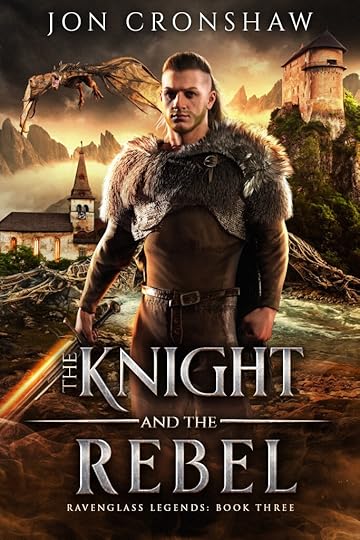Exploring Moral Ambiguity in Fantasy: Why Shades of Grey Make for Better Stories
When I first discovered fantasy through works like The Hobbit and The Chronicles of Narnia, the moral lines were clearly drawn.
Good characters wore white (or at least earth tones), villains wore black, and you always knew who to root for.
As I’ve grown as both a reader and a writer, I’ve become increasingly drawn to stories that explore the murkier territories of morality.
In The Knight and the Rebel, I deliberately set out to create a story where both sides could be right—or wrong—depending on your perspective.
Ragnar believes he can reform the Empire from within, using his position and influence to protect his people.
Maja fights to tear that same Empire down, seeing it as an irredeemable force of oppression.
Both are acting out of love for their homeland and people, but their methods and beliefs put them in direct opposition.
Examples of Moral Complexity in FantasyThis kind of moral complexity isn’t new to fantasy.
Joe Abercrombie’s First Law trilogy masterfully subverts traditional fantasy tropes by presenting characters who defy easy categorisation.
Take Sand dan Glokta—a torturer who commits horrible acts, yet remains oddly sympathetic due to his own suffering and sharp wit.
Or consider George R.R. Martin’s Jaime Lannister, who begins as a seemingly irredeemable villain but reveals layers of honour and complexity that force readers to question their initial judgments.
Why Moral Ambiguity ResonatesWhat makes these morally ambiguous stories so compelling?
I’d argue it’s because they better reflect the reality of human nature and historical conflict.
Real people rarely see themselves as villains.
The coloniser believes they’re spreading civilisation and progress.
The resistance fighter believes they’re defending their way of life.
Both can commit acts of terrible cruelty while believing they serve a greater good.
This is why I chose to show both sides of the conflict in The Knight and the Rebel.
Through Ragnar’s eyes, we see the Empire’s genuine belief in its civilising mission, its complex political mechanisms, and the real relationships and loyalties that bind it together.
Through Maja, we witness the brutal reality of occupation, the desperation of resistance, and the way violence can corrupt even the most noble cause.
Balancing Good and Evil in StorytellingSome readers have asked why I didn’t make the Empire more overtly evil or the rebels more clearly heroic.
The answer is simple: that would have been a less honest story.
History teaches us that empires aren’t cartoonishly evil—they’re systems of power built on genuine beliefs about progress and civilisation, maintained by people who often sincerely believe in their mission.
Similarly, resistance movements, however justified their cause, can become twisted by violence and revenge.
The Role of Fantasy in Examining MoralityThe beauty of fantasy is that it allows us to examine these complex moral questions in a removed context.
When we’re not caught up in the specifics of real-world conflicts, we can more easily analyse the underlying dynamics of power, resistance, and moral compromise.
This doesn’t mean there’s no place for more traditionally heroic fantasy—sometimes we need those stories of clear good triumphing over obvious evil.
But I believe the genre is enriched by works that dare to explore the grey areas, challenging readers to question their assumptions and sympathies.
Why Moral Ambiguity MattersAfter all, isn’t that what great literature should do?
Make us think, make us question, and help us see the world in new ways?
In my view, moral ambiguity isn’t just a storytelling technique—it’s a tool for understanding the complexity of human nature and the difficult choices we all face.
What Do You Think?Do you prefer your fantasy with clear heroes and villains, or do you appreciate stories that explore moral grey areas?
Let me know in the comments below.

The post Exploring Moral Ambiguity in Fantasy: Why Shades of Grey Make for Better Stories first appeared on Jon Cronshaw.



